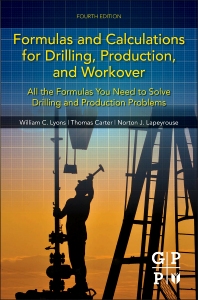Designing a drill rig is no easy feat, especially if it has to be tailored for a tough environment.
This year Borys Chylinski did both of those things, all the while a college student.
The Skorpion Rock Drill, Chylinski’s conceptual mining drill prototype, aims to address the dangers and space restrictions drillers face in mines.
His creation went over so well that he was selected as a national runner up in Canada for the 2014 James Dyson Awards. The annual international competition recognizes current and recent design engineering students whose inventions serve a practical purpose, are technically and commercially viable, and incorporate sustainability. The competition, celebrating 10 years, is run by the James Dyson Foundation, British inventor James Dyson’s charitable trust.
“We consider this a great level of accomplishment for the student and their project,” says Lydia Beaton, James Dyson Foundation manager. “The opportunity to land a spot on the national list is commendable and gives students an opportunity to network with like-minded individuals and learn more about the design engineering process.”
Chylinski, a Toronto resident and recent graduate of Humber College, didn’t exactly kick off the project for the fun of it. It’s the culmination of the industrial design major’s senior year thesis project. The assignment was to make something inherently dangerous safer through design. He started in October 2013 and finished in April 2014, just before graduation.
“I’d been following the Dyson Awards for the past couple years and I knew that I wanted to submit something, but I didn’t know what I was going to submit until I finished this project and, thankfully, the design brief for the competition fit what I had made,” Chylinski says. “So I went for it and honestly … it’s a cool thing.”
Skorpion Rock Drill
The Skorpion Rock Drill is basically “a jackleg drill on a carrier,” according to Chylinski. “So it uses the same principles of a pneumatic drill but it’s sitting on top of this quadruped, which is a four-legged type of drill carrier.”
The operator would stand on the back of the machine, drive it to the rock phase, and hook up the air and water as with a jackleg drill. When ready to drill, the operator could dismount from the drill, take the removable control panel with him and operate the machine by remote control.
“Then when they get off they can stand at a safe distance,” Chylinski explains. “They don’t have to be feeling the vibrations from the drill. They don’t have to be so close to the noise. They can avoid any sharp debris coming off the rock …”
As the air and water are being pushed through the machine, the compressed air would charge a generator, which would charge the batteries located in the vehicle. He considers it a new take on hybrid, where the drill uses what mines have the most of — air and water — to power the drilling. Chylinski says using this form of energy instead of diesel equipment would clear up the air, further contributing to a safer experience for the mine driller.
The carrier’s four insect-like legs have wheels on them and act as a suspension for the vehicle so it can cross various types of terrain and stand at different angles, without having to compromise staying level. It can move easily laterally and has full extension up and down. The Skorpion Rock Drill can also be compacted or have its components dismounted to fit through tight spaces and or be lowered down a mine shaft.
“It’s just supposed to be as compact a vehicle as possible, just to make everything a little bit easier for the user,” Chylinski says.
He built a 1/5 scale model and estimates the drill would be around 7 feet long completely compact, and that it could extend to 12 feet forward and up to 15 feet high.
Purpose
Chylinski first encountered the problem he aims to address through his creation when he came across a YouTube video of miners in Colorado using a jackleg drill.
“These guys are carrying these things around, they’re tweaking their backs, and then they have to sit out for a couple of weeks or however long and can’t work,” Chylinski says. “So how can I make this easier? How can I fill this market gap between the jackleg drill and the incredibly cozy jumbo drills that they’re coming up with in Europe?”
While the jackleg drill alternative, jumbo drills, are awesome and packed with features, says Chylinski, they’re often too big for mines.
Professor Jamal Rostami, associate professor of energy and mineral engineering at Pennsylvania State University, agrees that both the jumbo and jackleg have their weaknesses.
“Jacklegs are used for drilling small headings where jumbo cannot be used or for drilling in odd corners or locations where jumbo or production drilling cannot work …” he says. “Jackleg drills are very quick set up and flexible and mobile but they are slow, very hard to work with and very exhausting to use and will have long term health effects on the workers.”
Rostami says the use of the jackleg has been eliminated or minimized in most high productive and modern mines. “However, in smaller less capital intensive operations the jacklegs are still in use.”
Chylinski got to work designing soon after realizing a market gap existed. He pieced together a user-centered compact drill carrier that aims to combine the features and safety of large scale jumbos with the versatility of the jackleg drill.
Design
He used a standard industrial design process that included market research, interviewing people who use jackleg drills, visiting a manufacturer of jackleg drills and observing a working mine.
Then he began conceptualizing and sketching. He finished up with using computer-aided design (CAD) to build the official dimensions, then having a 3D model printed out in 77 separate parts, painted and assembled.
He says he based a lot of dimensions off existing equipment and used a small Atlas Copco double boom jumbo for design inspiration. Most of the designing was spent in front of his desktop and at his school’s workshop.
“The entire design process, not counting the research, went from January until April and it was super long, so 16-hour days; my girlfriend hated me. That was probably what stood out the most.”
Once the concept was finished, Chylinski says he felt great. “That was probably the most fun I had, was you know, you sort of see the light at the end of the tunnel and you get to build this cool thing and that was fun. So making the models was great.”
Inspiration
The especially great part about the finished product, according to Chylinski, was making his family proud.
He wasn’t even planning on designing a drill rig in the beginning, but he was sure he wanted to design something geared toward making underground mining safer. That’s how he stumbled across the jackleg YouTube video — he was looking up videos on mining safety.
His interest in the topic stretches across the Atlantic to Lubin, Poland, the town he was born in. His father and grandfather both worked in a local copper mine, where they witnessed co-workers die and suffer serious injuries. “So it was kind of a nice way to explore a topic that I wasn’t familiar with and it was also a way that I could sort of find and excuse to explore my roots in a way,” Chylinski says.
His grandfather flew over to Canada from Poland during the design process and shared pictures and experiences from his more than three decades underground. “It was really interesting to hear, so this is completely dedicated to them. They worked really hard to sort of help us get over here and start a different life in Canada.”
Post-Graduation
Now that the concept is complete and college is behind him, Chylinski says he’s taking it easy, working at an industrial design firm. “Right this moment I don’t have any plans to commercialize the device, but a lot of the technology’s still emerging so maybe in a few years when some of this stuff becomes more affordable, maybe I’ll take it and run with it and see what happens.”
The project stopped at conceptualization largely, he says, because he doesn’t have the financial means to build a life-size, functioning version.
It is an interesting concept nonetheless, according to Rostami, but a functional prototype would need a lot more work. “… This system requires much development and perhaps mounting of the drill on an articulated and independent arm with three to six degrees of freedom to allow for drilling the corner holes. The drill cannot be mounted on the base and be able to reach all corners and direction needed for efficient blasting.”
Chylinski admits the drill isn’t perfect by his standards. “It’s almost kind of like a living, breathing thing where there are always aspects that I would like to change about it, but I feel pretty good and I think it looks pretty cool. I just hope that somebody takes some of these ideas and incorporates them.”
He says designing the Skorpion Rock Drill has been a great learning experience, because he went into it knowing little to nothing about drilling and mines.
“It’s very, very humbling to have people trying to interview me about my project. Very proud to be representing my school and Canada on an international scale with the Dyson Awards. It’s all really, really cool and I’m not used to it.”
Valerie King is associate editor of National Driller.










